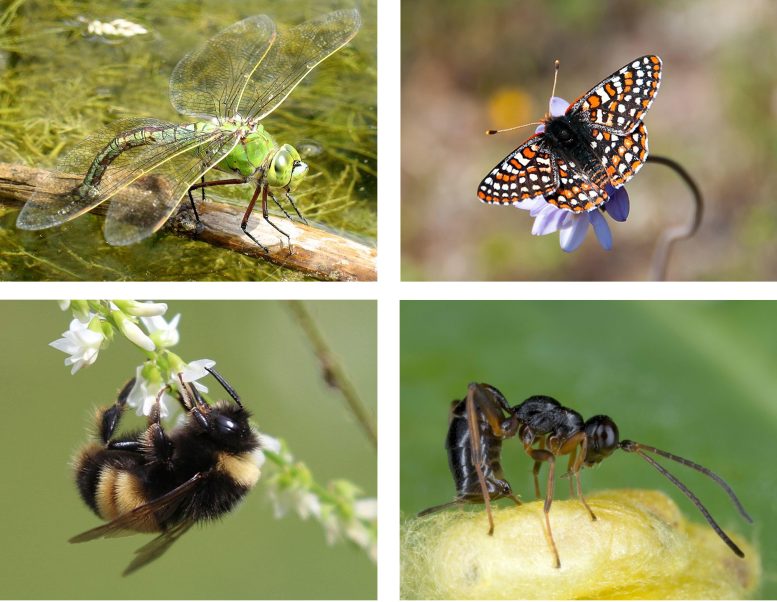70 scientists have issued a warning about the effects of climate change.
“If no action is taken to better understand and reduce the impact of climate change on insects, we will drastically limit our chances of a sustainable future with healthy ecosystems.”
This warning comes from 70 experts from 19 nations in a timely paper published in the journal Ecological Monographs. However, they also provide management techniques and approaches to help insects in a warming world.
Yes, we’ve heard about insect decline before. But no, we haven’t made much progress in stopping it globally. Climate change is still currently at the top of the world’s to-do list.
“Climate change aggravates other human-mediated environmental problems,” says Jeffrey Harvey from the Netherlands Institute of Ecology (NIOO-KNAW) and Vrije Universiteit Amsterdam. “Including habitat loss and fragmentation, various forms of pollution, overharvesting and invasive species.”
He leads the major paper by an international team of scientists. They provide a clear outline of how climatic extremes and climate change contribute to the decline of insects.

Local environmental characteristics can either harm or benefit insects (left panel), especially when insects are exposed to climatic extremes such as droughts and heat waves. Ecologically targeted management strategies (right panel) can help insects to adapt to climate change and other human-caused environmental problems. Credit: Netherlands Institute of Ecology, scientists’ warning on climate change and insects
The paper is part of the Scientists’ Warning series. “Insects play critical roles in so many ecosystems, but we are rapidly losing at least part of them,” Harvey stresses the urgency. And this seems the case, especially in temperate regions. The authors emphasize that both longer-term events and short-term extremes are harming insects in several ways.
“The gradual increase in global surface temperature impacts insects in their physiology, behavior, phenology, distribution and species interactions.” Harvey adds: “But also, more and longer lasting extreme events leave their traces.” Hot and cold spells, fires, droughts, floods.
Piling up
Evidence of the effects is piling up, and it’s all presented in this review. For instance, fruit flies, butterflies, and flour beetles can survive heat waves, but males or females become sterilized and thus unable to reproduce. They become “living dead.”
Bumblebees in particular prove very sensitive to heat, and climate change is now considered the main factor in the decline of several North American species.

Climate-change impacts on insects can be categorized into two major groups: gradual long-term change and extreme events that will increase in frequency and severity. Interventions include formal mitigation of change through policy and public approaches which in turn help to reduce impacts in various ways. Credit: Netherlands Institute of Ecology, scientists’ warning on climate change and insects
“Cold-blooded insects are among the groups of organisms most seriously affected by climate change because their body temperature and metabolism are strongly linked with the temperature of the surrounding air,” says Harvey.
One major concern with insect decline in a warming world is that plants – on which insects depend for food and shelter – are similarly affected by climate change. And as insect numbers dwindle, it in turn works its way higher up the food chain. This has happened to many birds, for instance, over the past decades.
Supporting the global economy
Think pollination, pest control, nutrient cycling, and decomposition of waste. Insects represent the overwhelming bulk of biodiversity and perform vitally important services that sustain human civilization, all worth staggering amounts of money (billions of dollars) annually to the global economy. Another reason to act on climate change. Harvey: “The late renowned ant ecologist Edward O. Wilson, once argued that ‘it is the little things that run the world.’ And they do!”
“Over time, insects must adjust their seasonal life cycles and distributions as the world warms,” says Harvey. “However, their ability to do this is hindered by other human-caused threats such as habitat destruction and fragmentation, and pesticides.”
Furthermore, heatwaves and droughts can drastically harm insect populations in the short term, making insects less able to adapt to more gradual warming. “Warming over different time scales poses different kinds of threats to insects.”
What to do
Importantly, the scientists not only describe the problems but also discuss a range of solutions and management strategies. These may help to buffer insects against climate warming. Individual people can help by caring for lots of different wild plants, providing food and areas where insects can shelter to ride out climate extremes. And by reducing the use of pesticides and other chemicals. “At the larger scale, we need to address climate change. Rewilding programs also need to consider micro-scale ecosystems which focus on the conservation of small animals like insects.”
“Insects are tough little critters and we should be relieved that there is still room to correct our mistakes,” according to Harvey. But time is running out. “We really need to enact policies to stabilize the global climate. In the meantime, at both government and individual levels, we can all pitch in and make urban and rural landscapes more insect-friendly.”
- aum and Karlston
-

 2
2




Recommended Comments
There are no comments to display.
Join the conversation
You can post now and register later. If you have an account, sign in now to post with your account.
Note: Your post will require moderator approval before it will be visible.